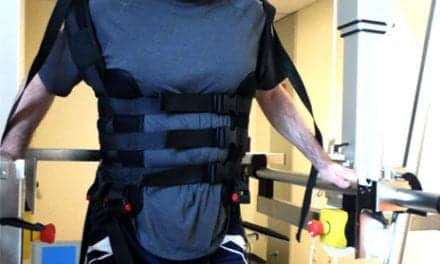Regularly practicing yoga exercises may lower a number of compounds in the blood and reduce the level of inflammation that normally rises because of both normal aging and stress, according to researchers at Ohio State University, Columbus, Ohio.
Their study, reported in the journal Psychosomatic Medicine, showed that women who routinely practiced yoga had lower amounts of the cytokine interleukin-6 (IL-6) in their blood.
The women also showed smaller increases in IL-6 after stressful experiences than did women who were the same age and weight but who were not yoga practitioners.
IL-6 is an important part of the body’s inflammatory response and has been implicated in heart disease, stroke, type-2 diabetes, arthritis, and a host of other age-related debilitating diseases. Reducing inflammation may provide substantial short- and long-term health benefits, the researchers suggest.
“In addition to having lower levels of inflammation before they were stressed, we also saw lower inflammatory responses to stress among the expert yoga practitioners in the study,” said Janice Kiecolt-Glaser, professor of psychiatry and psychology and lead author of the study, in a statement from the university. “Hopefully, this means that people can eventually learn to respond less strongly to stressors in their everyday lives by using yoga and other stress-reducing modalities.”
For the study, the researchers assembled a group of 50 women, age 41 on average. They were divided into two groups—“novices,” who had either taken yoga classes or who practiced at home with yoga videos for no more than 6 to 12 sessions, and “experts,” who had practiced yoga one of two times weekly for at least 2 years and at least twice weekly for the last year.
Each of the women was asked to attend three sessions in the university’s Clinical Research Center at 2-week intervals. Each session began with participants filling out questionnaires and completing several psychological tests to gauge mood and anxiety levels.
Each woman also was fitted with a catheter in one arm through which blood samples could be taken several times during the research tasks for later evaluation.
Participants then performed several tasks during each visit designed to increase their stress levels, including immersing their foot into extremely cold water for a minute, after which they were asked to solve a series of successively more difficult mathematics problems without paper or pencil.
Following these “stressors,” participants would either participate in a yoga session, walk on treadmill set at a slow pace (.5 miles per hour) designed to mirror the metabolic demands of the yoga session, or watch neutral, rather boring videos. The treadmill and video tasks were designed as contrast conditions to the yoga session.
When blood samples were analyzed after the study, researchers saw that the women labeled as “novices” had levels of the pro-inflammatory cytokine IL-6 that were 41% higher than those in the study’s “experts.”
“In essence, the experts walked into the study with lower levels of inflammation than the novices, and the experts were also better able to limit their stress responses than were the novices,” Kiecolt-Glaser said.
The researchers did not find the differences they had expected between the novices and experts in their physiological responses to the yoga session.
Co-author Lisa Christian, an assistant professor of psychology, psychiatry, and obstetrics and gynecology, suggested one possible reason: “The yoga poses we used were chosen from those thought to be restorative or relaxing. We had to limit the movements to those novices could perform as well as experts," she said in the statement. “Part of the problem with sorting out exactly what makes yoga effective in reducing stress is that if you try to break it down into its components, like the movements or the breathing, it’s hard to say what particular thing is causing the effect. That research simply hasn’t been done yet." Christian is also a yoga instructor.
Bill Malarkey, an professor of internal medicine and co-author on the study, pointed to the inflexibility that routinely comes with aging.
“Muscles shorten and tighten over time, mainly because of inactivity,” he said. “The stretching and exercise that comes with yoga actually increases a person’s flexibility and that, in turn, allows relaxation, which can lower stress.”
The researchers’ next step is a clinical trial to see if yoga can improve the health and reduce inflammation that has been linked to debilitating fatigue among breast cancer survivors. They’re seeking 200 women to volunteer for the study that’s funded by the National Cancer Institute.
The research team was supported in part by a grant from the National Center for Complementary and Alternative Medicine, part of the National Institutes of Health.
[Source: Ohio State University]




